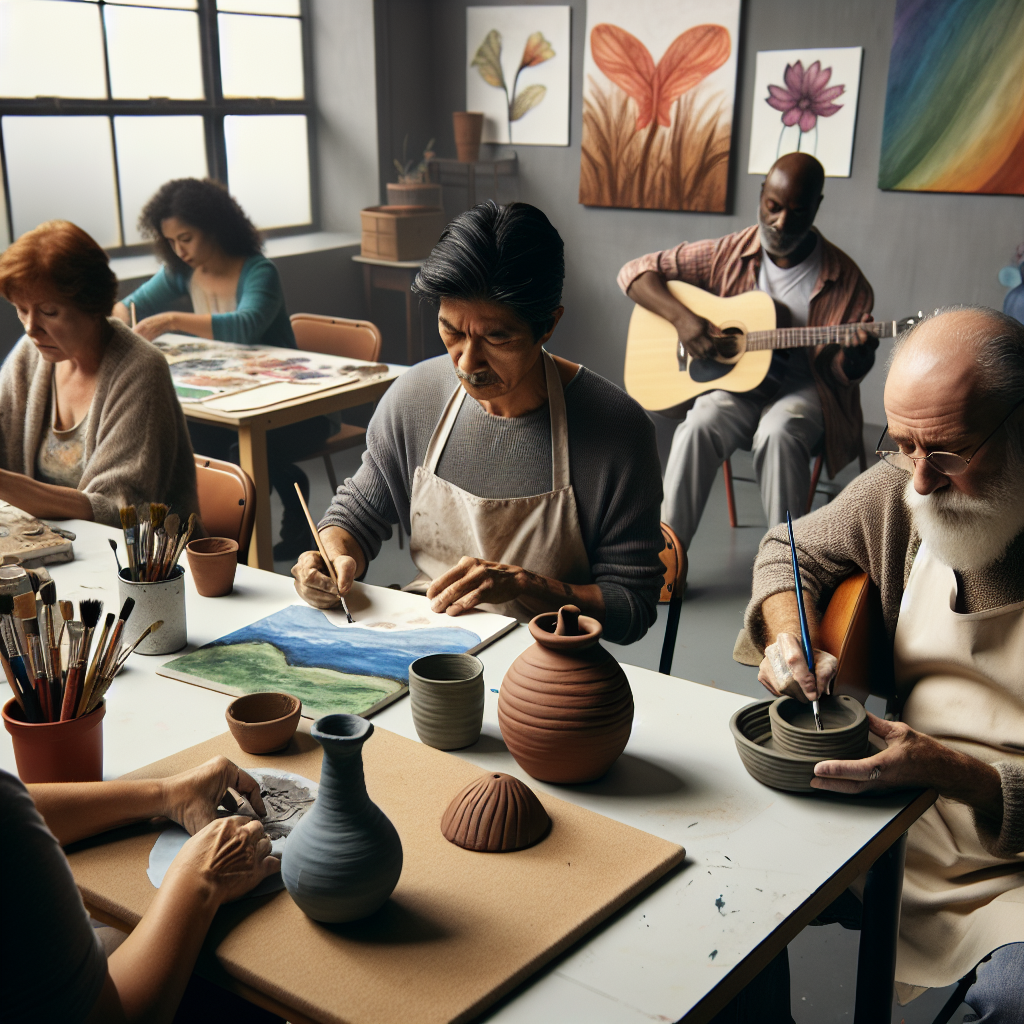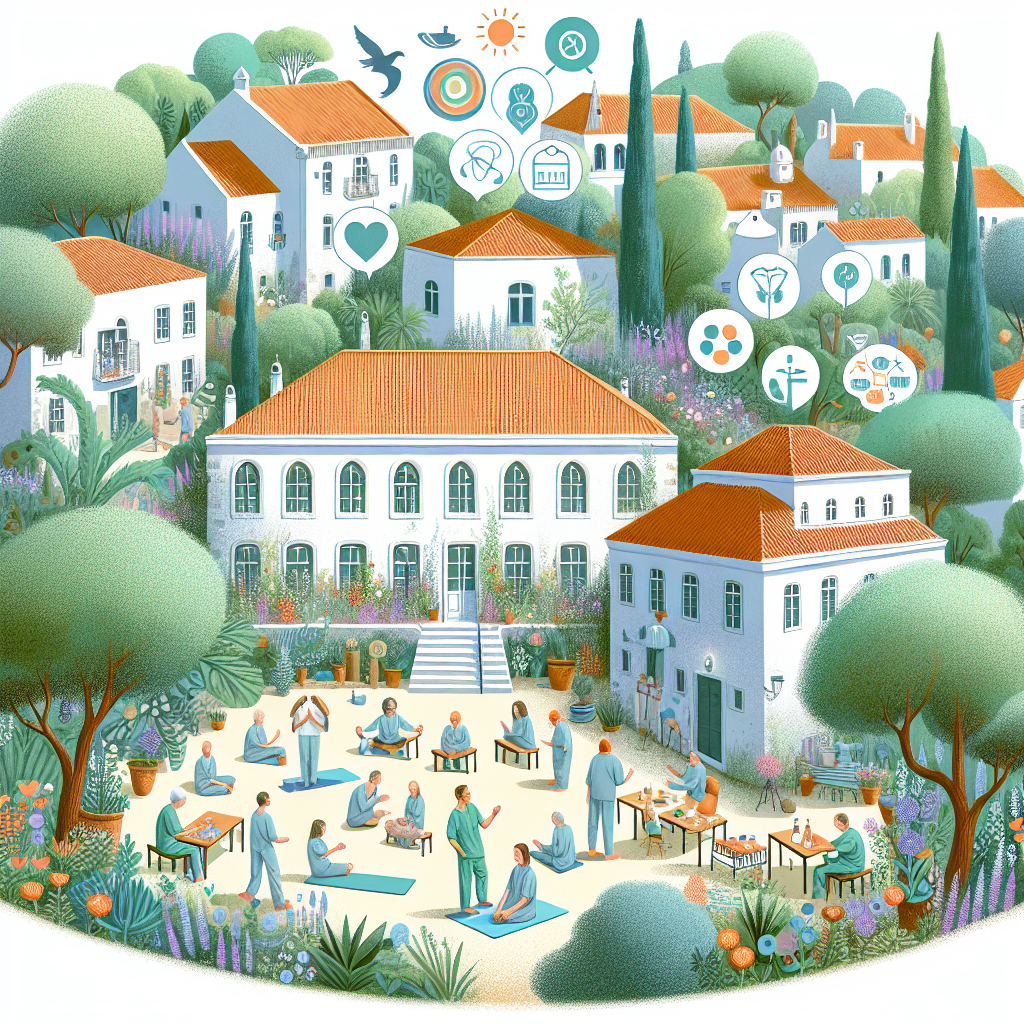-
Table of Contents
“Transforming Pain into Purpose: Art Therapy in Cocaine Rehab”
Introduction
Art therapy in cocaine rehab is a therapeutic approach that integrates creative expression through various art forms to aid in the recovery process. This form of therapy leverages the power of artistic activities such as painting, drawing, sculpting, and other visual arts to help individuals explore their emotions, reduce stress, and improve self-awareness. In the context of cocaine rehabilitation, art therapy provides a non-verbal outlet for patients to process their experiences and emotions related to addiction. It can be particularly beneficial in uncovering underlying psychological issues, fostering a sense of accomplishment, and enhancing overall mental health. By engaging in creative expression, individuals in cocaine rehab can develop healthier coping mechanisms, improve their emotional resilience, and support their journey towards long-term recovery.
Benefits Of Art Therapy In Cocaine Rehabilitation
Art therapy has emerged as a powerful tool in the realm of cocaine rehabilitation, offering a unique and transformative approach to recovery. This innovative form of therapy leverages the creative process to help individuals express themselves, process emotions, and develop coping mechanisms, all of which are crucial in overcoming addiction. The benefits of art therapy in cocaine rehabilitation are manifold, and its impact on the recovery journey is profound.
To begin with, art therapy provides a non-verbal outlet for expression. Many individuals struggling with cocaine addiction find it challenging to articulate their feelings and experiences through words alone. Art therapy allows them to convey complex emotions and thoughts through various artistic mediums such as painting, drawing, and sculpture. This form of expression can be particularly liberating for those who have internalized their struggles, offering a safe space to explore and release pent-up emotions.
Moreover, engaging in the creative process can be incredibly therapeutic. The act of creating art can induce a state of flow, where individuals become fully immersed in their activity, temporarily setting aside their worries and anxieties. This immersion can lead to a sense of accomplishment and self-worth, which is often diminished in those battling addiction. By fostering a positive self-image and boosting self-esteem, art therapy can play a pivotal role in rebuilding an individual’s identity and sense of purpose.
In addition to emotional expression and self-esteem enhancement, art therapy also aids in developing coping mechanisms. The creative process encourages problem-solving and critical thinking, skills that are essential for navigating the challenges of recovery. Through art, individuals can explore different perspectives and solutions, which can translate into more effective coping strategies in their daily lives. This newfound resilience can be instrumental in preventing relapse and maintaining long-term sobriety.
Furthermore, art therapy can facilitate communication and connection. Group art therapy sessions, in particular, provide a supportive environment where individuals can share their creations and experiences with others who are on a similar journey. This sense of community and shared understanding can alleviate feelings of isolation and foster a sense of belonging. Building these connections is vital for emotional support and can significantly enhance the overall rehabilitation experience.
Another significant benefit of art therapy in cocaine rehabilitation is its ability to address trauma. Many individuals with substance use disorders have experienced traumatic events that contribute to their addiction. Art therapy offers a gentle and non-invasive way to process and heal from these traumas. By externalizing their experiences through art, individuals can gain new insights and perspectives, which can be crucial for emotional healing and recovery.
Additionally, art therapy can be tailored to meet the unique needs of each individual. Therapists can customize sessions based on the person’s preferences, strengths, and therapeutic goals. This personalized approach ensures that the therapy is relevant and effective, maximizing its benefits for each participant.
In conclusion, the benefits of art therapy in cocaine rehabilitation are extensive and multifaceted. By providing a non-verbal outlet for expression, enhancing self-esteem, developing coping mechanisms, facilitating communication, addressing trauma, and offering a personalized approach, art therapy can significantly contribute to the recovery process. Its transformative power lies in its ability to tap into the creative potential within each individual, fostering healing, growth, and resilience. As more rehabilitation programs incorporate art therapy into their treatment plans, the path to recovery becomes not only attainable but also profoundly enriching.
How Art Therapy Aids Emotional Healing In Cocaine Rehab
Art therapy has emerged as a powerful tool in the realm of cocaine rehabilitation, offering a unique avenue for emotional healing and personal growth. This therapeutic approach leverages the creative process to help individuals express themselves, explore their emotions, and ultimately, find a path to recovery. The journey through cocaine rehab is often fraught with emotional turmoil, and traditional talk therapies, while effective, may not always reach the depths of a person’s psyche. Art therapy, however, provides an alternative means of communication, one that transcends words and taps into the subconscious mind.
One of the most significant benefits of art therapy in cocaine rehab is its ability to facilitate emotional expression. Many individuals struggling with addiction have difficulty articulating their feelings, either because they are too painful or because they have been suppressed for so long. Through the act of creating art, whether it be painting, drawing, or sculpting, individuals can externalize their inner experiences in a tangible form. This process can be incredibly cathartic, allowing them to confront and process emotions that might otherwise remain buried.
Moreover, art therapy can help individuals gain insight into their addiction and the underlying issues that contribute to it. The creative process often brings to light patterns and themes that might not be immediately apparent through verbal communication alone. For instance, a person might create a series of dark, chaotic images that reflect their inner turmoil and sense of loss. By examining these creations with the guidance of a trained art therapist, they can begin to understand the root causes of their addiction and develop healthier coping mechanisms.
In addition to fostering emotional expression and insight, art therapy also promotes self-esteem and empowerment. The act of creating something beautiful or meaningful can be incredibly validating, especially for individuals who may feel a sense of worthlessness or shame due to their addiction. Completing an art project provides a tangible sense of accomplishment and can help rebuild a positive self-image. This newfound confidence can be a crucial component of the recovery process, as it encourages individuals to believe in their ability to overcome their addiction and build a better future.
Furthermore, art therapy offers a safe and non-judgmental space for individuals to explore their identities and experiences. In a cocaine rehab setting, where vulnerability and honesty are essential for healing, the creative process can serve as a sanctuary. Participants can experiment with different forms of expression, free from the fear of criticism or rejection. This freedom can be particularly liberating for those who have felt stifled or misunderstood in other areas of their lives.
The benefits of art therapy extend beyond the individual, fostering a sense of community and connection among participants. Group art therapy sessions can create a supportive environment where individuals can share their creations and experiences with others who are on a similar journey. This shared experience can help reduce feelings of isolation and build a sense of camaraderie, which is vital for long-term recovery.
In conclusion, art therapy plays a crucial role in the emotional healing process for individuals in cocaine rehab. By providing a means of expression, insight, empowerment, and connection, it addresses the multifaceted nature of addiction and supports holistic recovery. As more rehab centers recognize the value of integrating art therapy into their programs, countless individuals will have the opportunity to heal and transform their lives through the power of creativity.
Q&A
1. How does art therapy benefit individuals in cocaine rehab?
Art therapy helps individuals in cocaine rehab by providing a non-verbal outlet for expressing emotions, reducing stress, and improving self-awareness, which can aid in the recovery process.
2. What types of art activities are commonly used in cocaine rehab programs?
Common art activities in cocaine rehab programs include drawing, painting, sculpting, and collage-making, which allow individuals to explore their feelings and experiences creatively.
Conclusion
Art therapy in cocaine rehab serves as a valuable tool for emotional expression, self-discovery, and healing. It provides individuals with a non-verbal outlet to process complex emotions and trauma, which are often underlying factors in addiction. By engaging in creative activities, patients can reduce stress, improve self-esteem, and develop healthier coping mechanisms. Overall, art therapy complements traditional treatment methods, contributing to a more holistic and effective recovery process.



